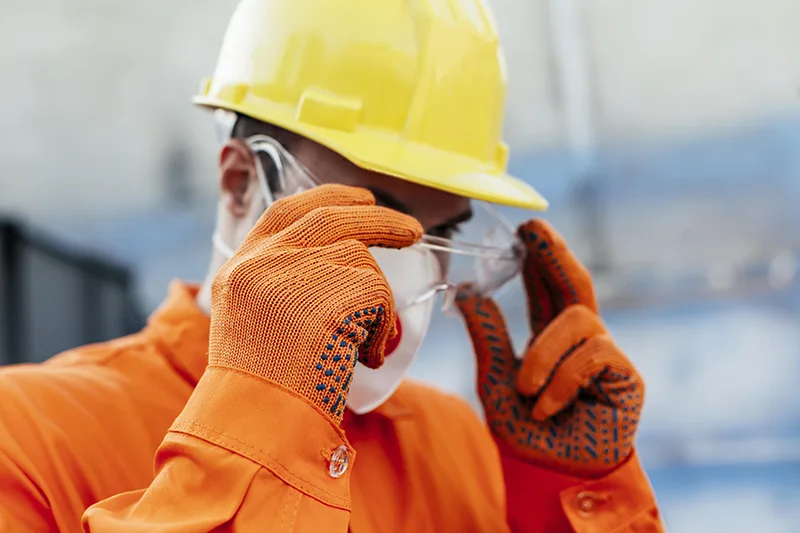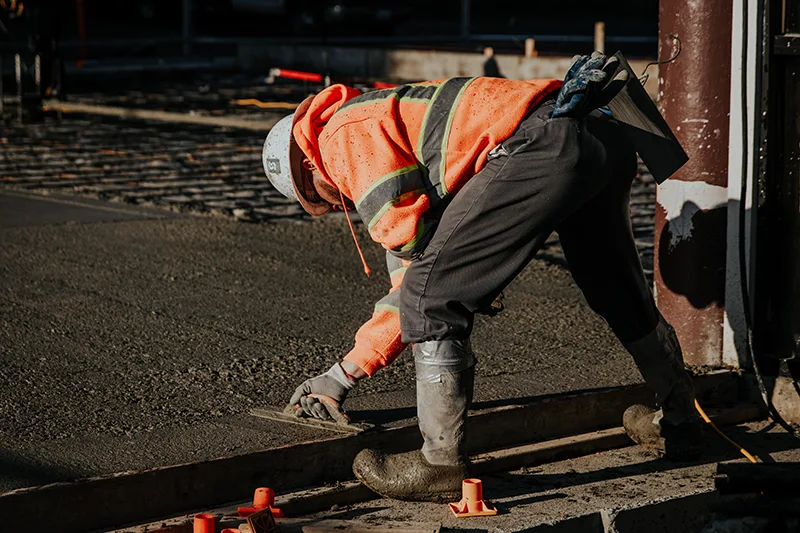Safety First: Best Practices for Handling Concrete on the Job Site
Posted on
Ensuring safety is of the utmost importance in any construction site, especially when working with concrete. To maintain a safe working environment, every construction worker and contractor should adhere to specific guidelines and best practices. At Suzio York Hill, we prioritize the safety of our workers and partners. Here is an outline of crucial safety measures for handling concrete on the job site that covers aspects such as handling, curing, and accident prevention.

Personal Protective Equipment (PPE):
When working with concrete, safety should be the top priority. It is important to ensure that all workers on the job site wear the necessary PPE. This includes safety glasses, gloves, steel-toed boots, and hearing protection. These items protect against potential hazards such as dust, chemicals, and loud noises commonly associated with concrete work.
When working with wet concrete, it is equally important to use PPE to protect against the dangers posed by its alkaline properties. Wet concrete can cause chemical burns and irritations that can quickly eat through skin and flesh in just a few hours. To protect your skin, it is recommended to wear long sleeves and pants tucked into gloves and boots. All boots should be waterproof, and gloves should be waterproof and resistant to alkaloids.
To avoid contamination, every piece of PPE gear must be kept separate from street clothes and upholstery. Kneepads should be used when kneeling on or near wet concrete to prevent injury. Eye protection should also be worn around wet concrete to avoid eye damage.
Concrete Handling and Placement:
Proper Lifting Techniques:
When lifting bags or buckets of concrete, it is essential to use proper lifting techniques to avoid back injuries. Remember to bend your knees, keep your back straight, and lift with your legs.
Avoid Overexertion:
To prevent accidents while working with concrete, it is essential to avoid overexertion and fatigue. Take regular breaks to rest, as the physical demands of the job can be high. Additionally, whenever possible, use mechanical aids such as forklifts or concrete pumps to transport and place concrete safely. Not only does this reduce the risk of injuries related to strain, but it also ensures a more efficient workflow.

Follow Proper Curing Procedures:
Proper curing is a crucial stage in the concrete construction process. Following the recommended curing procedures is essential to ensure that the concrete attains the desired strength and durability. Protective measures should be taken during the curing period to safeguard the concrete from harsh weather conditions, including heavy rainfall and extreme heat. You can use curing blankets or other protective coverings to shield the concrete.
Preventing Accidents:
Slip and Trip Hazards:
Keep the work area clean and organized to prevent slips and trips. Promptly clean up any spills and use slip-resistant footwear to reduce the risk of accidents.
Traffic Control:
Mark and control the areas where concrete is poured to prevent unauthorized personnel from entering. Establish designated walkways and traffic patterns to avoid collisions.
Communication is Key:
Ensure clear communication among all workers on the site. Use hand signals or radios to coordinate movements and activities, mainly when operating heavy machinery.
Emergency Response Plan:
Have a well-defined emergency response plan in place. All workers should be familiar with emergency procedures, including first aid and evacuation protocols.
At Suzio York Hill, we prioritize safety on the job site, and we urge all construction workers and contractors to do the same when dealing with concrete. By following these best practices, we can create a safer work environment, minimize the likelihood of accidents, and ensure successful project completion.
